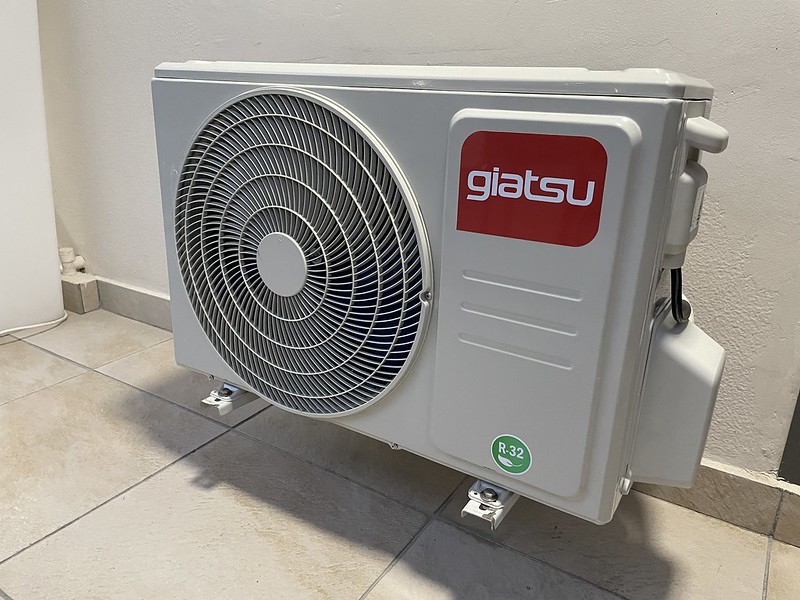A mini-split system and a heat pump are both types of heating, ventilation, and air conditioning (HVAC) systems that use refrigerant to transfer heat from one place to another. However, there are some key technical and functional differences between the two that are important to understand when choosing the right system for your home or building.
Understanding the Basics: Mini-Split Systems vs. Heat Pumps
Mini-Split Systems
A mini-split system is a type of heat pump that does not use ductwork to distribute heated or cooled air throughout a building. Instead, it uses an outdoor unit (called a compressor or condenser) and one or more indoor units (called air handlers or evaporators) that are connected by a small conduit containing refrigerant lines, power cables, and a condensate drain. Each indoor unit can be controlled independently, allowing for zoned heating and cooling.
The key features of a mini-split system include:
- Ductless Design: Mini-split systems do not require ductwork, which can be a significant advantage in older buildings or homes where installing ductwork would be difficult or expensive.
- Zoned Heating and Cooling: Each indoor unit can be controlled independently, allowing you to heat or cool only the rooms that are being used, which can save energy and money.
- Compact and Flexible Installation: The outdoor unit and indoor units are connected by a small conduit, making the installation process relatively simple and flexible compared to a traditional central HVAC system.
- Improved Indoor Air Quality: Without ductwork, there is less risk of air leaks and improved indoor air quality.
Heat Pumps
A heat pump, on the other hand, can be a central system that uses ductwork to distribute heated or cooled air throughout a building. In this case, the heat pump works similarly to a mini-split system, but the indoor units are connected to a network of ducts that deliver the conditioned air to different rooms.
The key features of a central heat pump system include:
- Ductwork-Based Distribution: Heat pumps that use ductwork to distribute conditioned air can provide more even heating and cooling throughout a building, as the air is distributed through the ducts.
- Cost-Effective Installation: Central heat pumps can be more cost-effective to install, especially if ductwork is already in place.
- Potential for Less Efficient Heating and Cooling: If the ductwork is leaky or poorly insulated, the system may be less efficient than a mini-split system.
Technical Specifications and Efficiency Considerations
Both mini-split systems and heat pumps use the same basic components, such as a compressor, evaporator, and condenser. However, the efficiency of the system can vary depending on several factors:
- Size of the Unit: The size of the HVAC unit, measured in tons or BTUs, should be properly sized for the space it is intended to condition.
- Type of Refrigerant: The type of refrigerant used can impact the system’s efficiency and environmental impact. Newer refrigerants, such as R-32, are more energy-efficient and have a lower global warming potential.
- System Design: The overall design of the HVAC system, including the placement and configuration of the indoor and outdoor units, can affect the system’s efficiency.
- Ductwork Quality: For central heat pump systems, the condition and insulation of the ductwork can significantly impact the system’s efficiency.
To ensure optimal performance and efficiency, it is essential to have a qualified HVAC contractor properly size and install the system, taking into account the specific requirements of the building and the desired level of comfort and control.
Choosing Between a Mini-Split System and a Heat Pump
When deciding between a mini-split system and a heat pump, there are several factors to consider:
- Building Size and Layout: Mini-split systems are often better suited for smaller or irregularly shaped buildings, as they allow for more flexible and targeted heating and cooling. Central heat pumps may be more appropriate for larger, more open floor plans.
- Presence of Ductwork: If the building already has ductwork in place, a central heat pump may be the more cost-effective option. If there is no existing ductwork, a mini-split system may be the better choice.
- Desired Level of Comfort and Control: Mini-split systems offer more individual control and zoning capabilities, which can be beneficial for homeowners who want to heat or cool specific rooms or areas. Central heat pumps may provide more even, whole-building conditioning.
- Budget: Mini-split systems can be more expensive to install, especially if multiple indoor units are required. Central heat pumps may be more cost-effective, particularly if ductwork is already in place.
Ultimately, the decision between a mini-split system and a heat pump should be based on a careful evaluation of the specific needs and requirements of the building, as well as the homeowner’s preferences and budget. A qualified HVAC contractor can provide expert guidance and recommendations to help you make the best choice.
Conclusion
In summary, while mini-split systems and heat pumps share some fundamental similarities as HVAC systems, they have distinct technical and functional differences that should be carefully considered when selecting the right system for your home or building. By understanding the key features and considerations of each, you can make an informed decision that will provide optimal comfort, efficiency, and cost-effectiveness for your specific needs.

